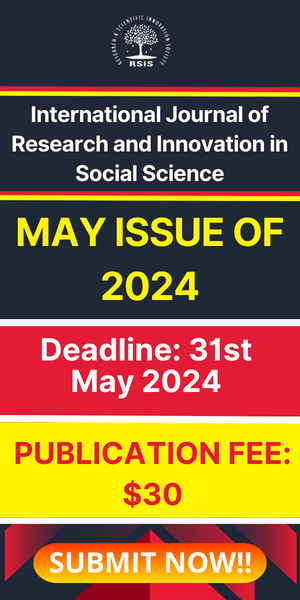Fabrication and Characterization of Garment Waste Reinforced Polymer Composite
- December 5, 2018
- Posted by: RSIS
- Category: Mechanical Engineering
International Journal of Research and Scientific Innovation (IJRSI) | Volume V, Issue XI, November 2018 | ISSN 2321–2705
Fabrication and Characterization of Garment Waste Reinforced Polymer Composite
Mantesh Basappa Khot1, M Prasanna Kumar2
1Post Graduate Student, Department of Mechanical Engineering, University BDT College of Engineering, Karnataka, India
2Associate Professor, Department of Mechanical Engineering, University BDT College of Engineering, Karnataka, India
Abstract- Traditional materials have been continuously replacing by composite materials, because of their superior properties, such as high tensile strength, low thermal expansion and high strength-to-weight ratio. Textile fibre reinforced composites are more attractive due to their high specific strength, light weight and finding increased applications in many engineering fields especially in interior construction of buildings.
In the present study is to develop composite material from garment waste recycling technology that will reduce in the increasing environmental impact by garment waste and introducing a new product. Textile waste reinforced polymer composites were fabricated with different weight ratio of reinforcement and matrix material by using hand lay-up technique. The mechanical properties of fabricated composite material such as tensile strength, compressive strength, flexural strength, impact strength and also water absorption property were studied on fabricated garment waste composite samples according to ASTM standards. From the experimental results, it has been observed that 30% chopped garment waste, 60% epoxy1resin and 10% fly ash composite specimens perform better than other composite specimens. It is suggested that these hybrid composites can be used as an alternative material for interior applications such as ceiling panels, sound barrier panels for acoustic, roof tiles and building insulation material.
Key words- Recycling, Waste garment, Epoxy, Role of Mixture, Mechanical Properties
I. INTRODUCTION
The amount of waste has been regularly increasing due to increasing human population and urbanization. A typical waste management system comprises collection, transportation, pre-treatment, processing and final abatement of residues [2] Ayhan Demirbas. The various stages where the garment is being wasted in garment industry is fabric store, waste in the cutting room, bundling room, production floor, dyeing & washing, printing and finishing [1]


